Abstract
Free cytoplasmic calcium has been postulated to play a role in preventing powdery mildew in a series of homozygous ml-o mutants of barley, Hordeum vulgare L. Protoplasts isolated from 7-day-old plants of the ml-o resistant-susceptible (R-S) barley isolines, Riso 5678/3* × Carlsberg II R and S, were used to test for differences in fluxes of Ca2+ across the plasmalemma. Greater influx or lesser efflux might account for a higher free cytosolic Ca2+ postulated to exist in ml-o R mutants. Uniform patterns of uptake were maintained for 3 hours from solutions of 0.2 and 2 millimolar Ca2+. Washout curves of 45Ca2+ from R and S protoplasts revealed three compartments—presumed to represent release from the vacuole, organelles, and the cytoplasm (which included bound as well as free Ca2+). Uptake and washout did not differ between isolines. On the basis of recent determinations of submicromolar levels of free cytoplasmic Ca2+ and our initial rates of 45Ca-labeled Ca2+ uptake, we show that measurement of the unidirectional influx of Ca2+ across the plasmalemma is not feasible because the specific activity of the pool of free cytoplasmic calcium increases almost instantaneously to a level that would result in a significant, but unknown, efflux of label. Similarly, measurement of the efflux of Ca2+ across the plasmalemma is not possible since the activity of the pool of free cytoplasmic calcium is a factor of 350 smaller than the most rapid component of the washout experiment. This pool of cytoplasmic free Ca2+ will wash out too rapidly and be too small to detect under the conditions of these experiments.
Full text
PDF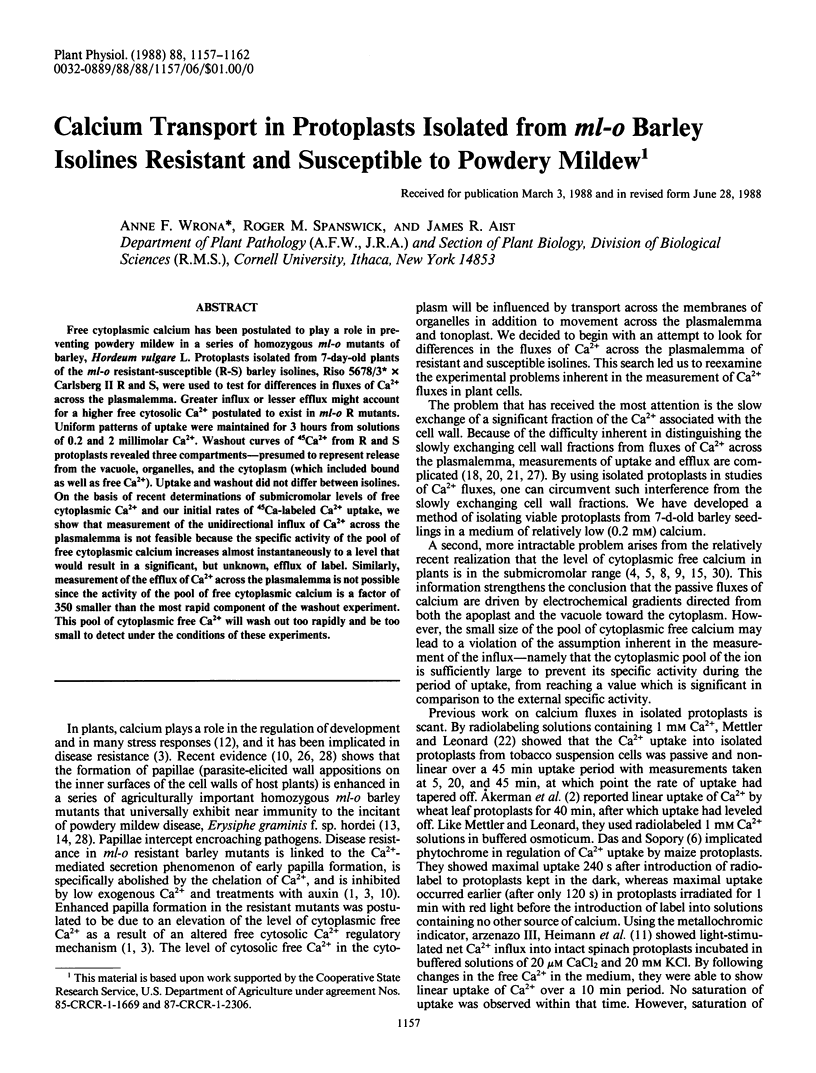
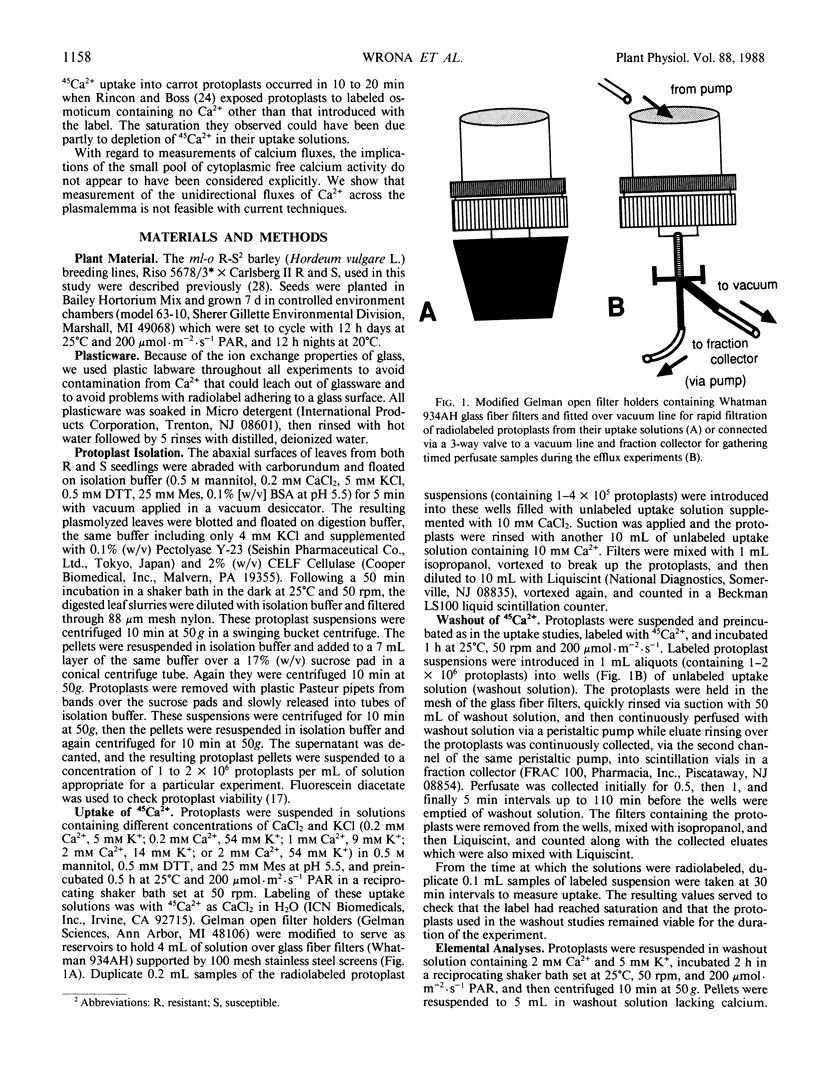
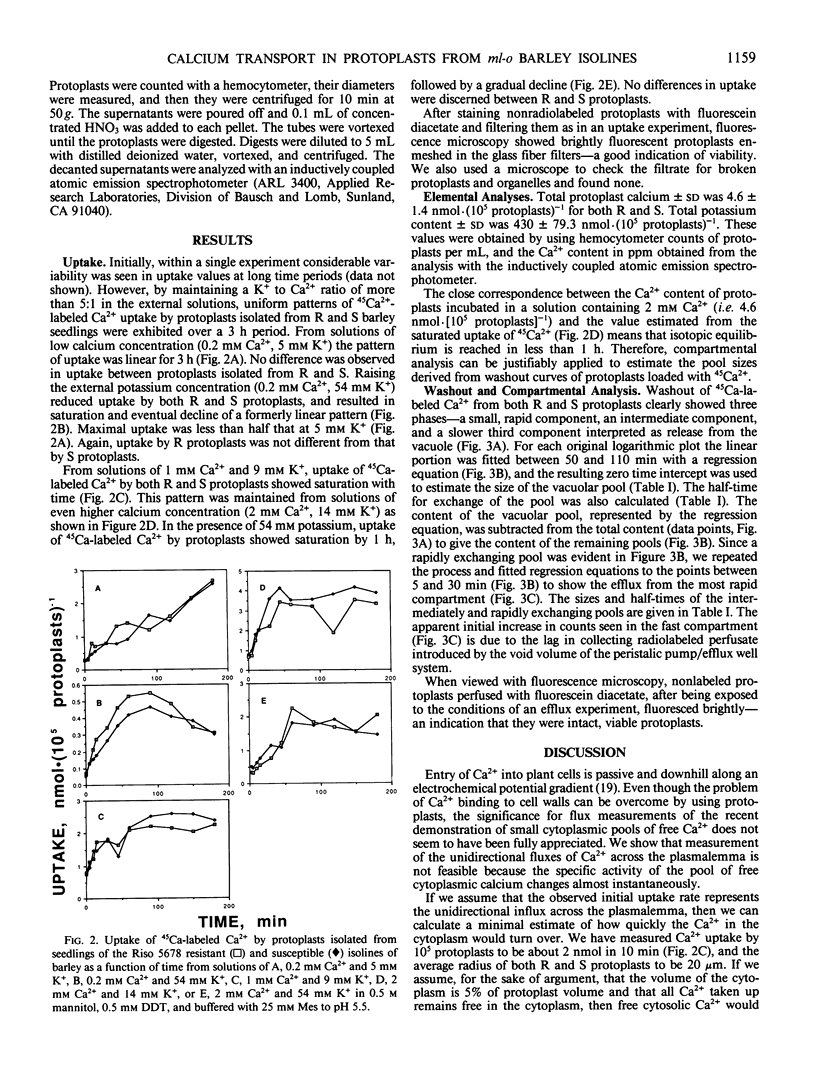

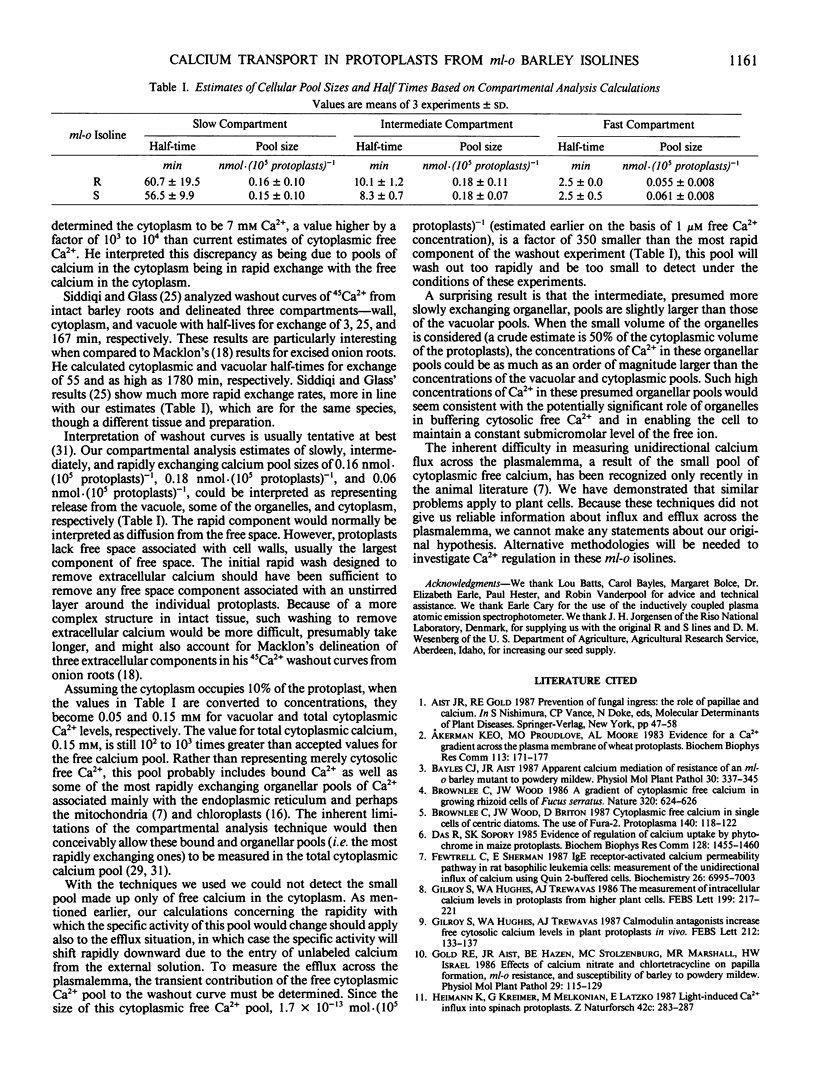
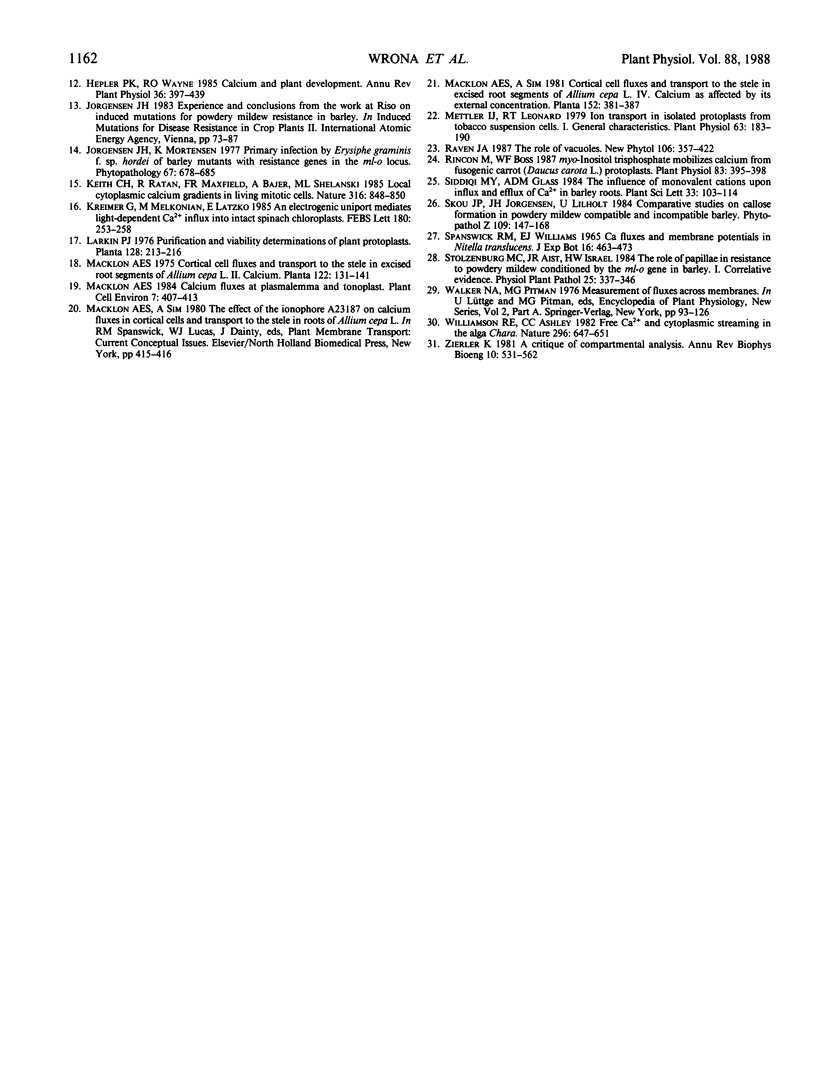
Selected References
These references are in PubMed. This may not be the complete list of references from this article.
- Akerman K. E., Proudlove M. O., Moore A. L. Evidence for a Ca2+ gradient across the plasma membrane of wheat protoplasts. Biochem Biophys Res Commun. 1983 May 31;113(1):171–177. doi: 10.1016/0006-291x(83)90447-3. [DOI] [PubMed] [Google Scholar]
- Das R., Sopory S. K. Evidence of regulation of calcium uptake by phytochrome in maize protoplasts. Biochem Biophys Res Commun. 1985 May 16;128(3):1455–1460. doi: 10.1016/0006-291x(85)91103-9. [DOI] [PubMed] [Google Scholar]
- Fewtrell C., Sherman E. IgE receptor-activated calcium permeability pathway in rat basophilic leukemia cells: measurement of the unidirectional influx of calcium using quin2-buffered cells. Biochemistry. 1987 Nov 3;26(22):6995–7003. doi: 10.1021/bi00396a021. [DOI] [PubMed] [Google Scholar]
- Keith C. H., Ratan R., Maxfield F. R., Bajer A., Shelanski M. L. Local cytoplasmic calcium gradients in living mitotic cells. 1985 Aug 29-Sep 4Nature. 316(6031):848–850. doi: 10.1038/316848a0. [DOI] [PubMed] [Google Scholar]
- Mettler I. J., Leonard R. T. Ion transport in isolated protoplasts from tobacco suspension cells: I. General characteristics. Plant Physiol. 1979 Jan;63(1):183–190. doi: 10.1104/pp.63.1.183. [DOI] [PMC free article] [PubMed] [Google Scholar]
- Rincon M., Boss W. F. myo-Inositol Trisphosphate Mobilizes Calcium from Fusogenic Carrot (Daucus carota L.) Protoplasts. Plant Physiol. 1987 Feb;83(2):395–398. doi: 10.1104/pp.83.2.395. [DOI] [PMC free article] [PubMed] [Google Scholar]
- Williamson R. E., Ashley C. C. Free Ca2+ and cytoplasmic streaming in the alga Chara. Nature. 1982 Apr 15;296(5858):647–650. doi: 10.1038/296647a0. [DOI] [PubMed] [Google Scholar]
- Zierler K. A critique of compartmental analysis. Annu Rev Biophys Bioeng. 1981;10:531–562. doi: 10.1146/annurev.bb.10.060181.002531. [DOI] [PubMed] [Google Scholar]


